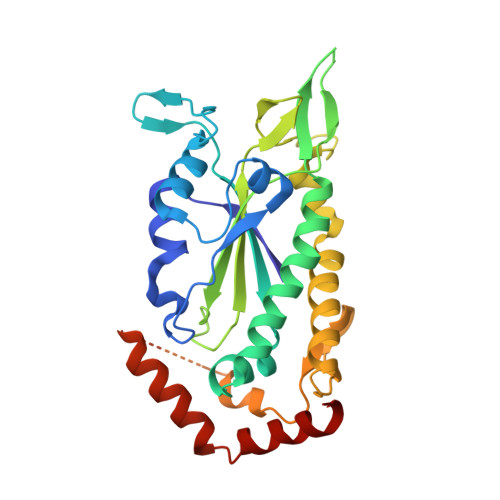Disrupting antibiotic resistance propagation by inhibiting the conjugative DNA relaxase.
Lujan, S.A., Guogas, L.M., Ragonese, H., Matson, S.W., Redinbo, M.R.(2007) Proc Natl Acad Sci U S A 104: 12282-12287
- PubMed: 17630285
- DOI: https://doi.org/10.1073/pnas.0702760104
- Primary Citation of Related Structures:
2Q7T, 2Q7U - PubMed Abstract:
Conjugative transfer of plasmid DNA via close cell-cell junctions is the main route by which antibiotic resistance genes spread between bacterial strains. Relaxases are essential for conjugative transfer and act by cleaving DNA strands and forming covalent phosphotyrosine linkages. Based on data indicating that multityrosine relaxase enzymes can accommodate two phosphotyrosine intermediates within their divalent metal-containing active sites, we hypothesized that bisphosphonates would inhibit relaxase activity and conjugative DNA transfer. We identified bisphosphonates that are nanomolar inhibitors of the F plasmid conjugative relaxase in vitro. Furthermore, we used cell-based assays to demonstrate that these compounds are highly effective at preventing DNA transfer and at selectively killing cells harboring conjugative plasmids. Two potent inhibitors, clodronate and etidronate, are already clinically approved to treat bone loss. Thus, the inhibition of conjugative relaxases is a potentially novel antimicrobial approach, one that selectively targets bacteria capable of transferring antibiotic resistance and generating multidrug resistant strains.
- Department of Chemistry, Lineberger Comprehensive Cancer Center, University of North Carolina, Chapel Hill, NC 27599-3290, USA.
Organizational Affiliation:



















